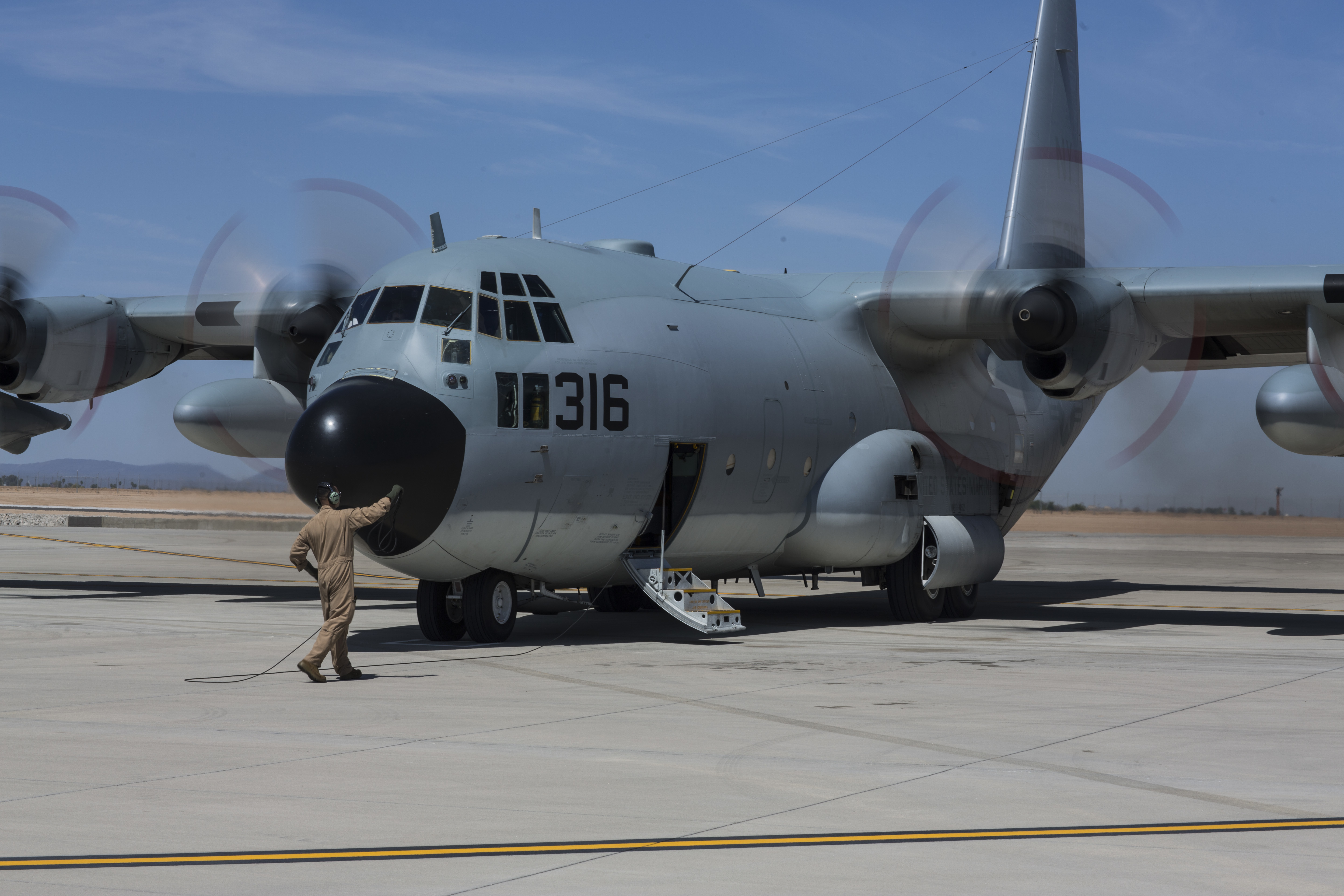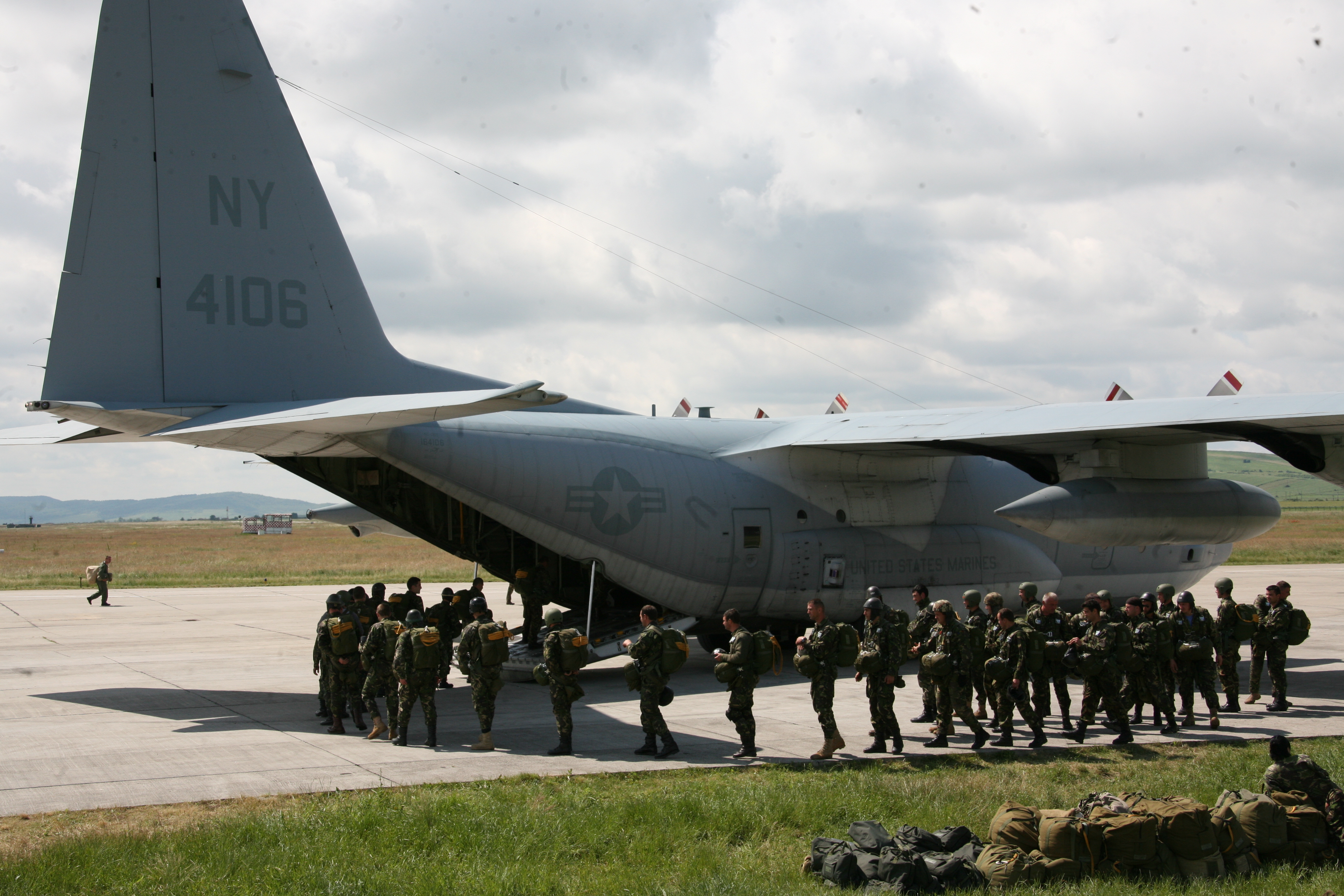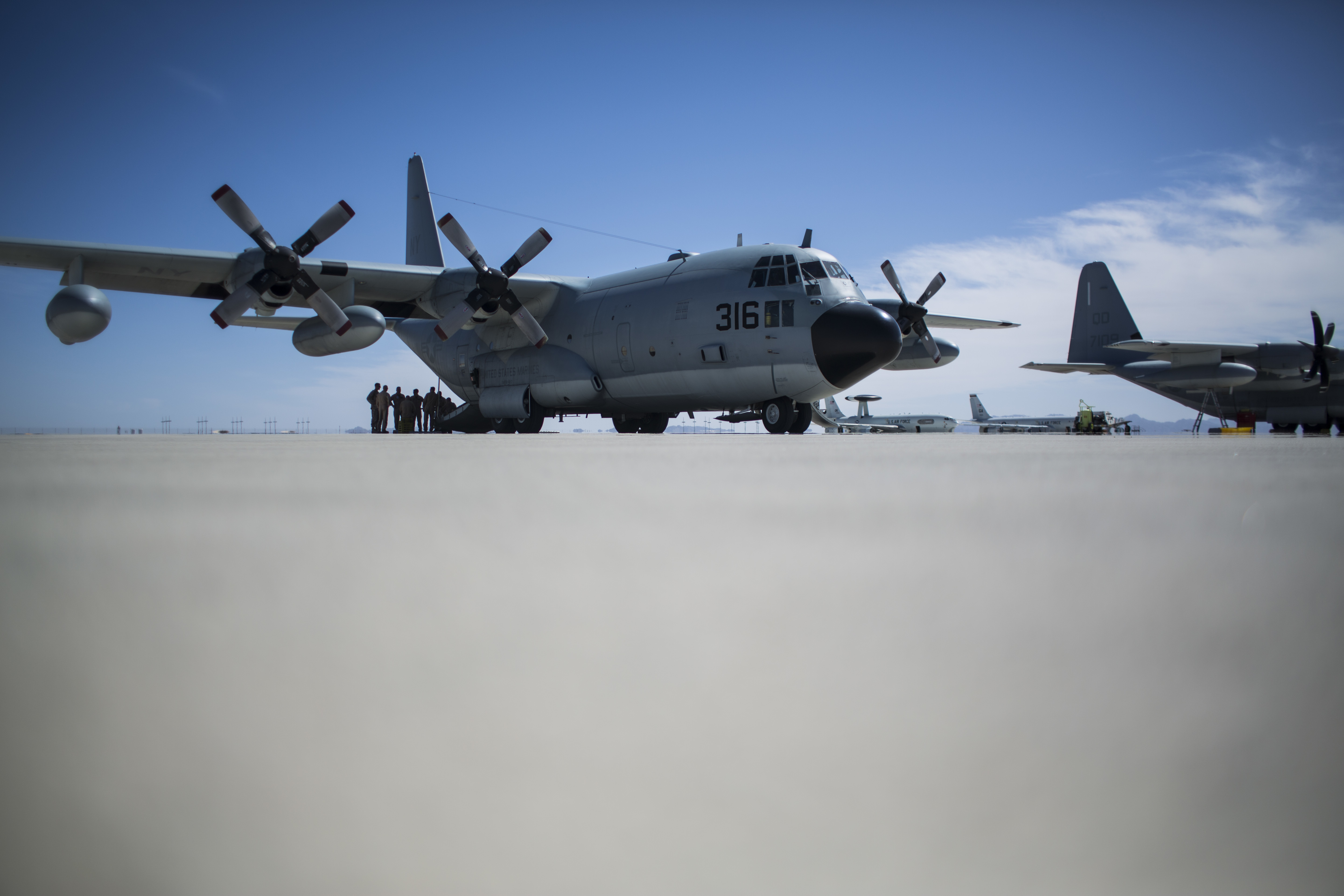
This post has been corrected to reflect that the KC-130 itself has experienced only three in-flight mishaps, rather than four in-flight mishaps as was previously reported. A fourth entry provided by the Naval Safety Center was mistakenly labeled as a KC-130 mishap; rather, the Naval Safety Center told USNI News after this story was first published, “while air refueling with the KC-130 tanker, the receiver aircraft caught fire, rendered the jet uncontrollable and forced the pilot to eject. The pilot suffered lost workdays — his plane was destroyed. Because the KC-130 was involved in this Class A mishap is why it appears as a Class A mishap.The KC-130 landed without incident.”
The KC-130T crash that killed 15 Marines and a sailor is one of only three major in-flight incidents in that aircraft type in almost the last 40 years, making the plane among the safest in use today.
The C-130 Hercules, which serves as both an aerial refueling tanker and a troop and cargo transport plane for the Marine Corps, has among the best safety records in the service. It has only experienced three in-flight Class A mishaps – incidents involving loss of life or permanent disability, total loss of an aircraft or more than $2 million in damages – according to Naval Safety Center data dating back to 1980, the center told USNI News today.
Two of those Class A mishaps occurred in 2002, with the third being this week’s crash.
“The KC-130 has one of the lowest mishap rates of all Marine Corps aircraft,” Marine Corps spokeswoman Capt. Sarah Burns told USNI News today.
“Over the past 15 years, there have been only three Class A Flight Mishaps involving all Marine Corps models of the C-130, including the crash on July 10th. In 2002 there was a mishap in Pakistan which resulted in seven deaths and a mishap in California with no fatalities.”

The aircraft type has also only experienced four ground-based Class A mishaps, including incidents such as towing and taxiing mishaps.
The Naval Safety Center described the seven total Marine Class A mishaps as follows:
- On Sept. 19, 1980, a KC-130F maintainer was killed in a ground mishap in California when the Marine was exposed to fatal levels of solvent fumes.
- On Oct. 8, 1997, a KC-130F in Okinawa experienced a bleed air ducting failure during a high-power post-maintenance run.
- On Jan. 9, 2002, a KC-130R in Pakistan experienced a flash fire and crashed into a mountain during its final turn headed towards an airfield in theater. Burns added this crash killed seven personnel onboard.
- On Feb. 11, 2002, a KC-130F crash landed shortly after taking off from California, leading to major and minor injuries but no deaths.
- On March 23, 2010, a KC-130J wing tip struck other aircraft while taxiing in Okinawa, Japan.
- On July 28, 2016, a KC-130T experienced massive hail damage while parked on the ramp at Peterson Field in Colorado.
- On July 10, 2017, a KC-130T crashed in a field in Mississippi, killing all 16 personnel onboard.
- Additionally, on Jan. 9, 1990, KC-130T was refueling another aircraft when the receiving aircraft caught fire. The pilot of that airplane ejected and survived but that aircraft was a total loss. The KC-130T was unharmed and landed safely. This incident was at first logged as a Class A mishap for a KC-130, but the Naval Safety Center later clarified that it was only incidentally involved and that the Class A mishap was due to the other airplane.
The Marine Corps currently only operates the KC-130J in its active units and the KC-130T in one remaining reserve unit. The KC-130F and R have since been retired.
The C-130 family of planes was first introduced in 1954 and has been flown by the U.S. Marine Corps, Navy, Air Force and Coast Guard, as well as by more than 70 countries around the world. The KC-130T specifically was first flown by the Marine Corps in 1983, according to Naval Air Systems Command. The Marines’ 2017 aviation plan notes the squadron involved in the crash, VMGR-452, is the last unit still operating these older planes; the active units all transitioned to the new KC-130J by 2009, and the other reserve units are transitioning or have completed the transition. VMGR-452 is expected to begin its upgrade to the new planes in Fiscal Year 2019.

Additionally, Monday afternoon’s crash was unique in its great loss of life. Burns told USNI News this was the deadliest Marine Corps aviation crash in 12 years.
“In addition to the most recent mishap on July 10, there has been only one mishap that resulted in the loss of 16 or more lives. In January 2005, a CH-53E Super Stallion crashed in Iraq, killing 30 Marines and one sailor.”
She told USNI News that that crash happened at night in al-Anbar Province in Iraq, when a helicopter from HMH-361 crashed into the desert.
The service has seen other mass casualty crashes over the past few years. In January 2016 two CH-53Es crashed during a training event in Hawaii, killing 12. In May 2015 six Marines and two Nepalese soldiers died when a UH-1Y Huey helicopter crashed during a humanitarian assistance/disaster response mission in Nepal after a major earthquake. And in March 2015 seven Marines with the Marine Corps Forces Special Operations Command and four Louisiana National Guardsmen died when their UH-60 Blackhawk crashed in Florida during a training mission.





